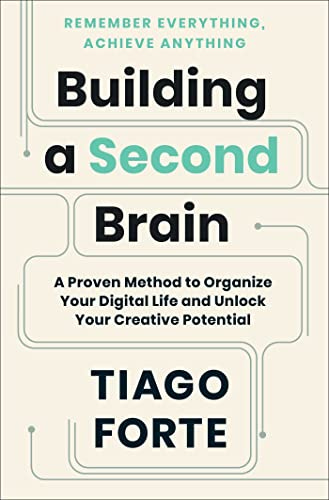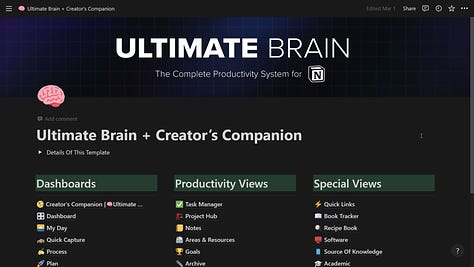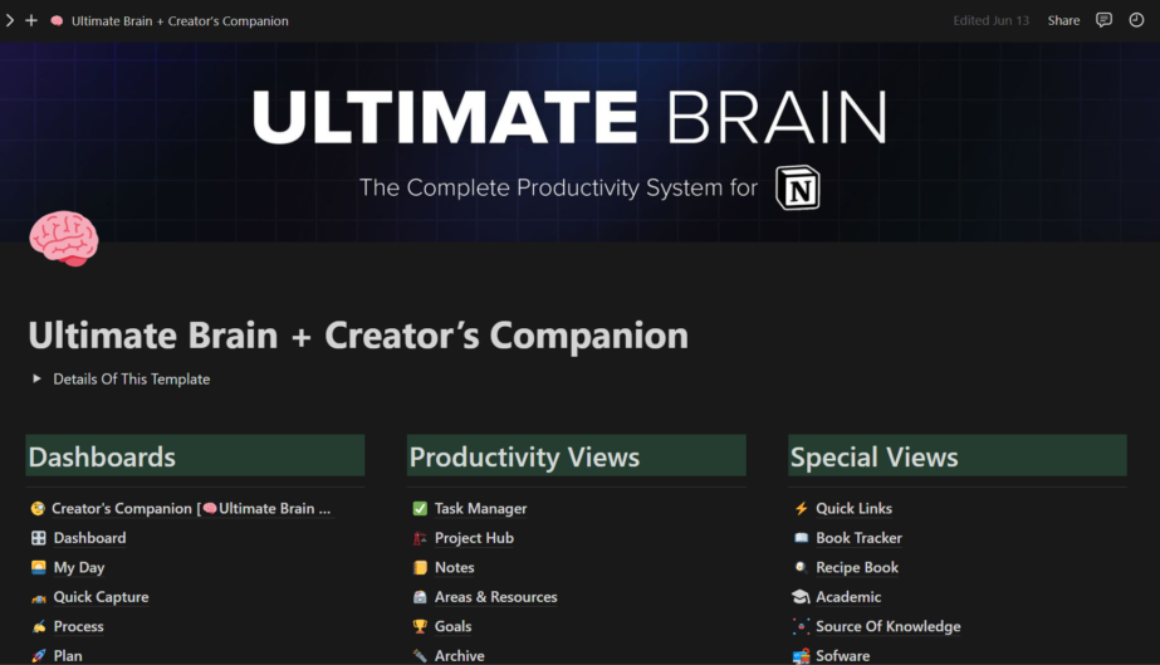Building A Second Brain
Hey Friends, I am Suman. How are you doing? I hope you are having a great day and making it a beautiful one if not know that you can turn it around anytime you wish.
I am thrilled to introduce you to the concept of “Building a Second Brain” by Tiago Forte. This book completely changed the way I take notes and process them.

What is a second brain and why should you have one?
The amount of information that we consume on a daily basis is staggering, and it can be overwhelming to keep track of it all. Writing things down is a simple and effective way to combat information overload, but it’s a step that many of us overlook.
By making a habit of capturing information, whether it’s in the form of notes, audio recordings, or even photographs, we can start to build a repository of knowledge that we can draw upon in the future. This repository becomes our second brain, a digital extension of our mind that helps us stay organized and on top of our game.
But capturing information is just the first step. We also need a system in place to organize and retrieve this information. This is where Building a Second Brain comes in. By creating a system that allows us to tag and categorize our notes, we can easily find the information that we need when we need it.
Overall, the key takeaway is that information overload is a real problem, but it’s one that we can overcome with the right tools and strategies. Building a Second Brain is one such strategy, and it’s a powerful way to harness the full potential of our minds and stay on top of our game in today’s information-driven world.
We’re now going to talk about the four parts of the methodology for building a second brain, which is the code system, CODE.
C = CAPTURE
O = ORGANIZE
D = DISTILL
E = EXPRESS

CAPTURE
The key insight here is a quote from David Allen, from the book, Getting Things Done, amazing productivity book, which is that,
your brain is for having ideas, not for holding them.
We spend so much of our kind of mental brain space trying to remember random stuff, whereas, if we were able to capture all that random stuff into a note-taking app or a second brain or into even pen and paper, any kind of system, it frees up our own brain to do the important things, like be creative or make connections or self-care or relaxation, or just having fun, rather than having to remember what was on my calendar, what’s on my to do list.
The easy way for solving this problem is to have a calendar and a to do list app, so you don’t have to remember anything. one step beyond that, which is what the second brain talks about, is about how we should capture any kind of idea that resonates with us and put it into this note-taking app.
If you are interested which app, I use for my second brain is Notion. I use a template as second brain in notion made by Thomas frank. If you want to learn notion, I highly recommend these two YouTube channels to learn notion, Thomas Frank Explains & Red Gregory
This is how my second brain look like in notion.

I just capture everything. Anytime I have a thought, it just goes straight into Notion. And basically, the idea is that anything that resonates with me personally I’m going to write down. So, this could be highlights from a book, for example. It could be an interesting quote that I’ve come across on a podcast or in real life. It could be a website that I’ve liked, and I’m like, oh, this is a sick website. I really want to remember this website, or I really want to remember this blog post from this website.
Also, I use take notes from various course I took online like on Photoshop, Video Editing etc.….
ORGANIZED
So, the next step of the code framework is organized. Now the idea here is now that we’ve captured all this stuff into this big-ass inbox, we now want to organize it in some capacity. Now, the wrong way, as Tiago says, the wrong way to organize notes is in terms of where you found them. So, people will be tempted to be like, I want to have a book notes folder. I want to have a podcast notes folder. I want to have a lesson notes folder. And the problem with that is that it’s just not particularly useful. Unless you decide one day, I just want to happen to look through my book notes, you’re probably not going to look through your book notes, because we don’t have that much time in our lives to revisit the stuff that we once thought was useful. Instead, what Tiago suggests, and he talks about it extensively in the book, which kind of gives a whole system for this, is to organize things by actionability. Where will I potentially use this information?
DISTILL
There are random quotes, random highlights, random blog posts. How do we know what the important essence of that thing is? And that’s where distilling comes in. Basically, Tiago talks about this whole method called progressive summarization, which is basically highlighting, but highlighting on steroids. Loads of us used to highlight in stuff when we were in school. It’s not particularly effective for retention in your own personal brain, but it is effective for flagging up the areas which are particularly important. And in the book, he’s got a bunch of specific examples about how to do this.
EXPRESS
And then the final method of the code framework is E for express. And the idea basically here is you want to show your work. Now, what am I doing? Here, I am expressing. I am converting my knowledge of personal knowledge management and reading this book and my favorite highlights and stuff from this book into a newsletter. This is how I express my work. But if I wasn’t making a newsletter, if I wasn’t a YouTuber, there are loads of other ways to express work as well. And really, that’s the whole point of this second brain system, at the end of the day. It’s all well and good, hoarding ideas and keeping them in a note-taking app. But unless we’re expressing those ideas in some way, they’re kind of useless. I mean, I guess you could just sort of hoard the knowledge and then you could apply it to your own life, but it’s way nicer if you can share it with other people.
And that’s the whole idea behind this whole framework, capturing, organising, and distilling, ultimately helps us express. It helps us show our work. It helps share our creativity, share whatever the thing we’ve been working on with other people, and being able to do it with a digital commonplace, a second brain, a digital note-taking system that brings all the ideas together, makes it way easier, way less friction, and way less stress to do all of that stuff, which is an important part of our jobs anyway.
